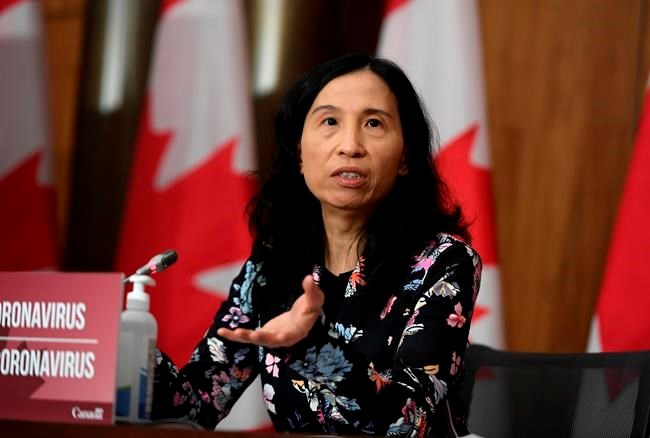The country’s top doctor says Canada is past the peak of the COVID-19 wave caused by the Omicron variant and is ready to move out of a crisis response.
"We are hopeful we are approaching a period of reduced transmission, allowing Canadians a chance to regain a sense of normalcy," Dr. Theresa Tam, chief public health officer, said Friday.
Tam released new national epidemiology and modelling that show progress in key indicators, such as lab test positivity and reported cases. Wastewater surveillance also shows the wave is ebbing.
However, the modelling does indicate that the true number of infections from Omicron has been much higher than reported.
Tam said while there are reasons to hope, COVID-19 is still spreading at high levels and hospitals remain stretched thin. Easing public health measures could still lead to resurgence, she said.
Tam showed models based on looser restrictions. The data showed that if restrictions are eased moderately, there could be a limited resurgence of daily cases with a potential for a slight increase of hospitalizations in the spring.
With a more substantial easing of measures, Tam said, there could be a large resurgence of daily cases, potentially exceeding prior peaks. That might not lead to a similar growth in hospitalizations, she said, because of the country's vaccination level.
"While a resurgence of cases is not unexpected given the characteristics of the Omicron variant, the good news is that current levels of immunity in the Canadian population are expected to reduce the impact of the Omicron infections going forward."
The country is in a better position to manage the pandemic without some of the more restrictive COVID-19 health measures, Tam said.
People should continue to take precautions such as avoiding crowded places and wearing a mask when necessary, she added.
"The cases might go up, but as long as that wave of hospitalizations isn't as high, we can probably cope with that. And with that comes a better balance."
Hospitalizations due to COVID-19 have declined in Canada's two most populous provinces in recent weeks, which has led to a gradual lifting of public health measures. On Friday, Ontario had a drop of 61 patients in hospital to 1,281.
Both provinces have also begun offering booster shots to youth between 12 and 17.
Ontario’s chief medical officer of health said earlier this week that as long as improvements continue, he expects immunization policies, such as those that require people be vaccinated or regularly tested to continue working, could be removed by March 1 and mask mandates a few weeks later.
Premier Doug Ford said he has been guided by science in making cautious choices on easing restrictions, and a decision around masks will be no different.
"But we also have to move forward, we have to get back to normal, we have to get our lives back to normal as well."
This report by The Canadian Press was first published Feb. 18, 2022.
Kelly Geraldine Malone, The Canadian Press




